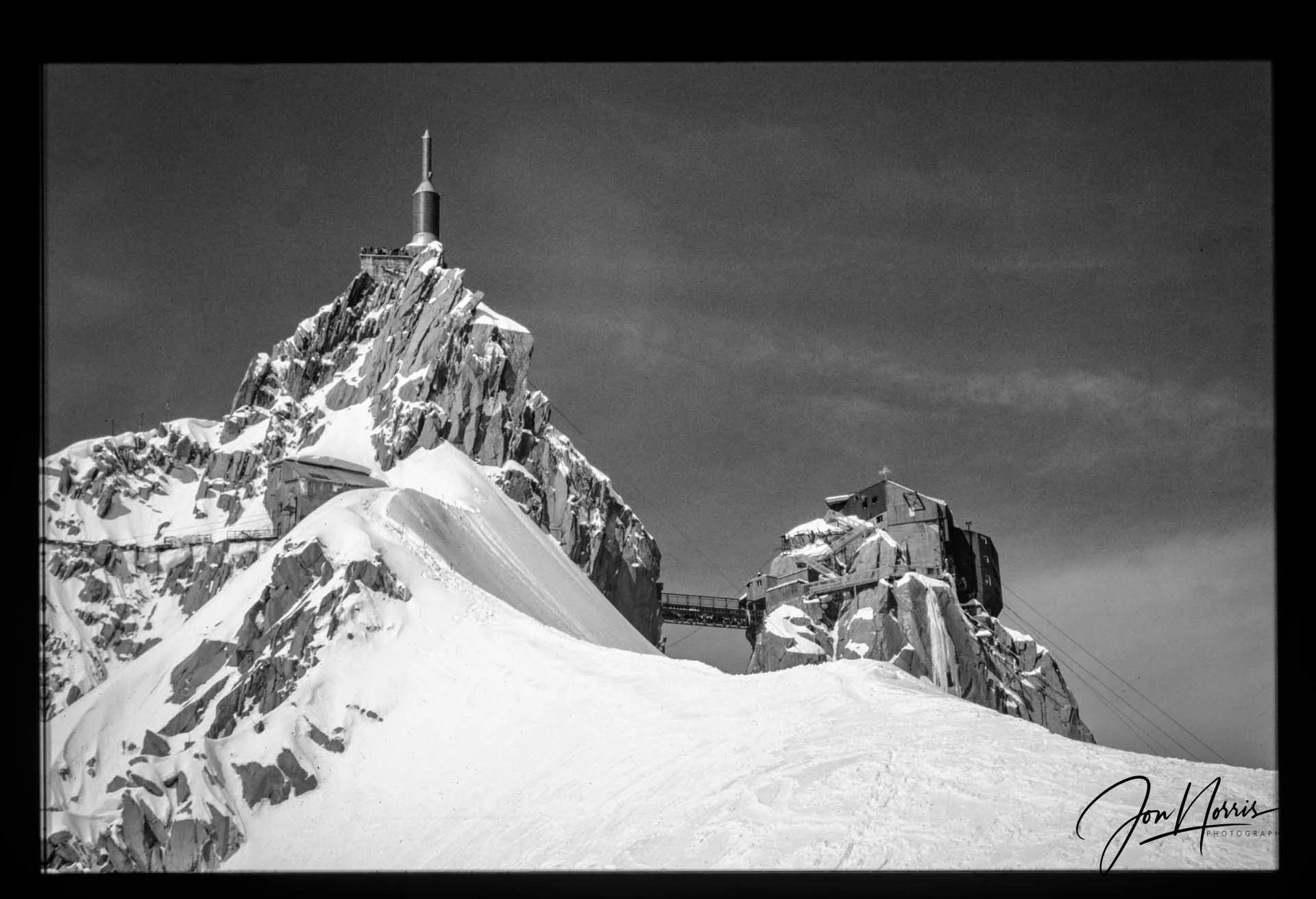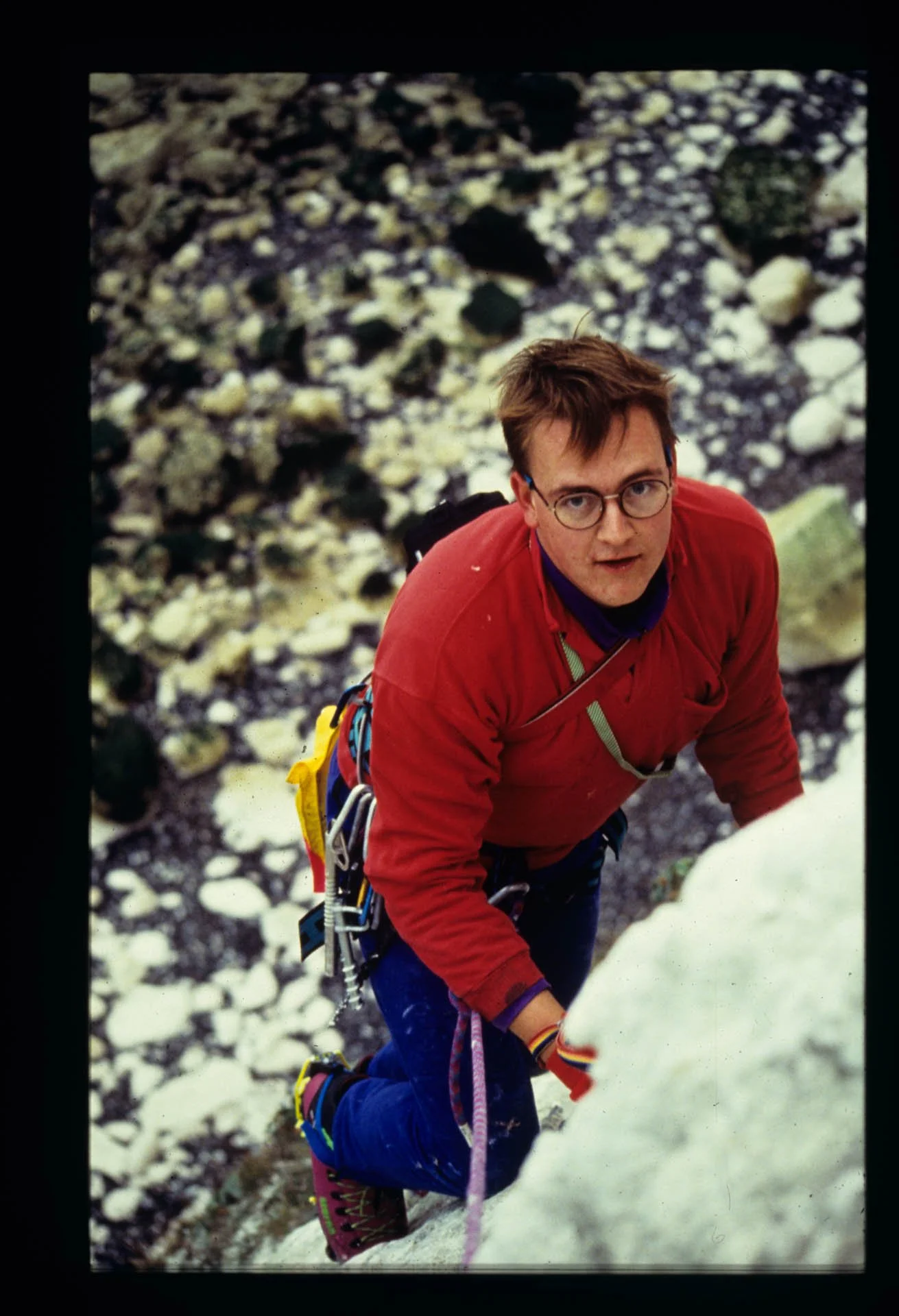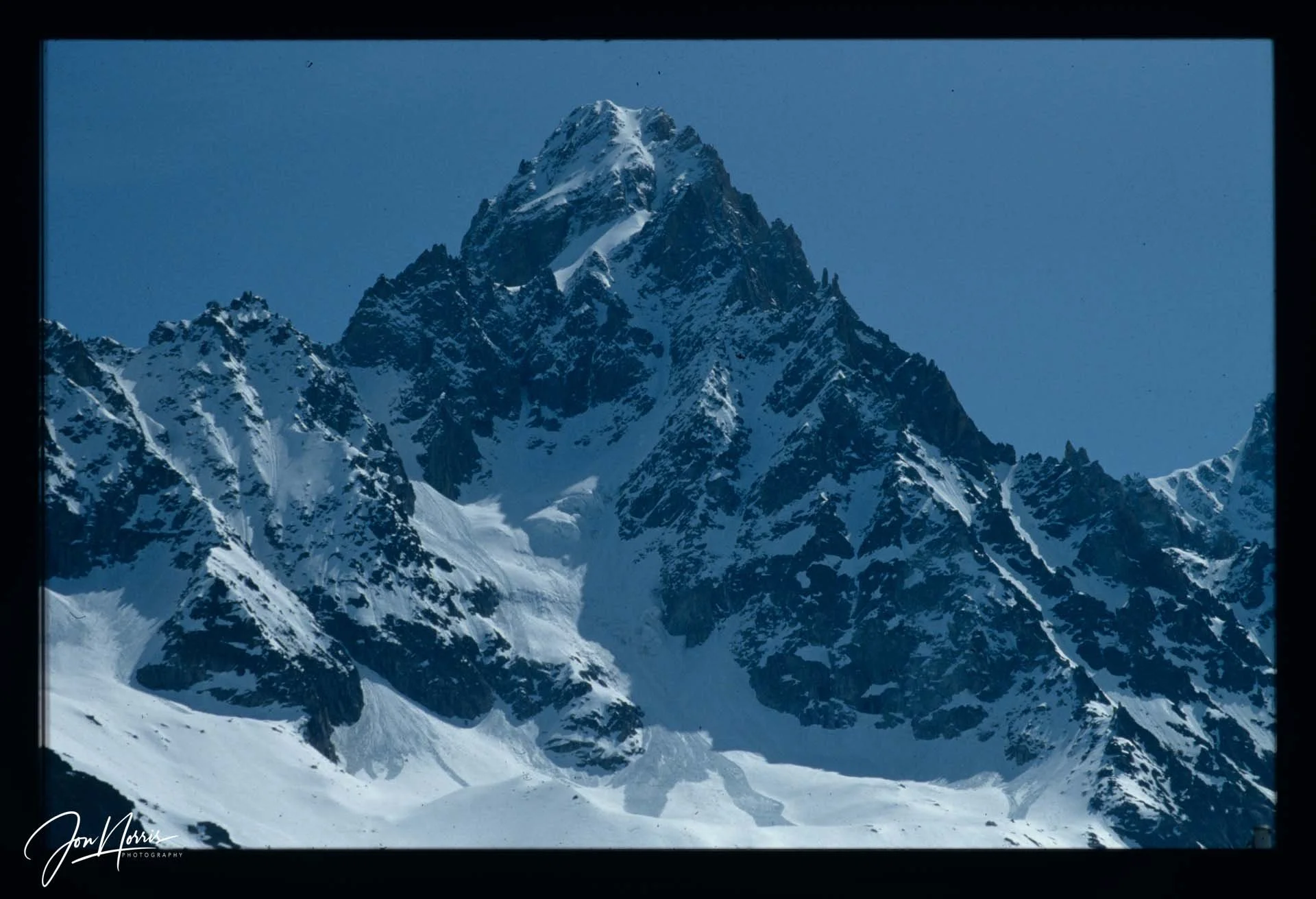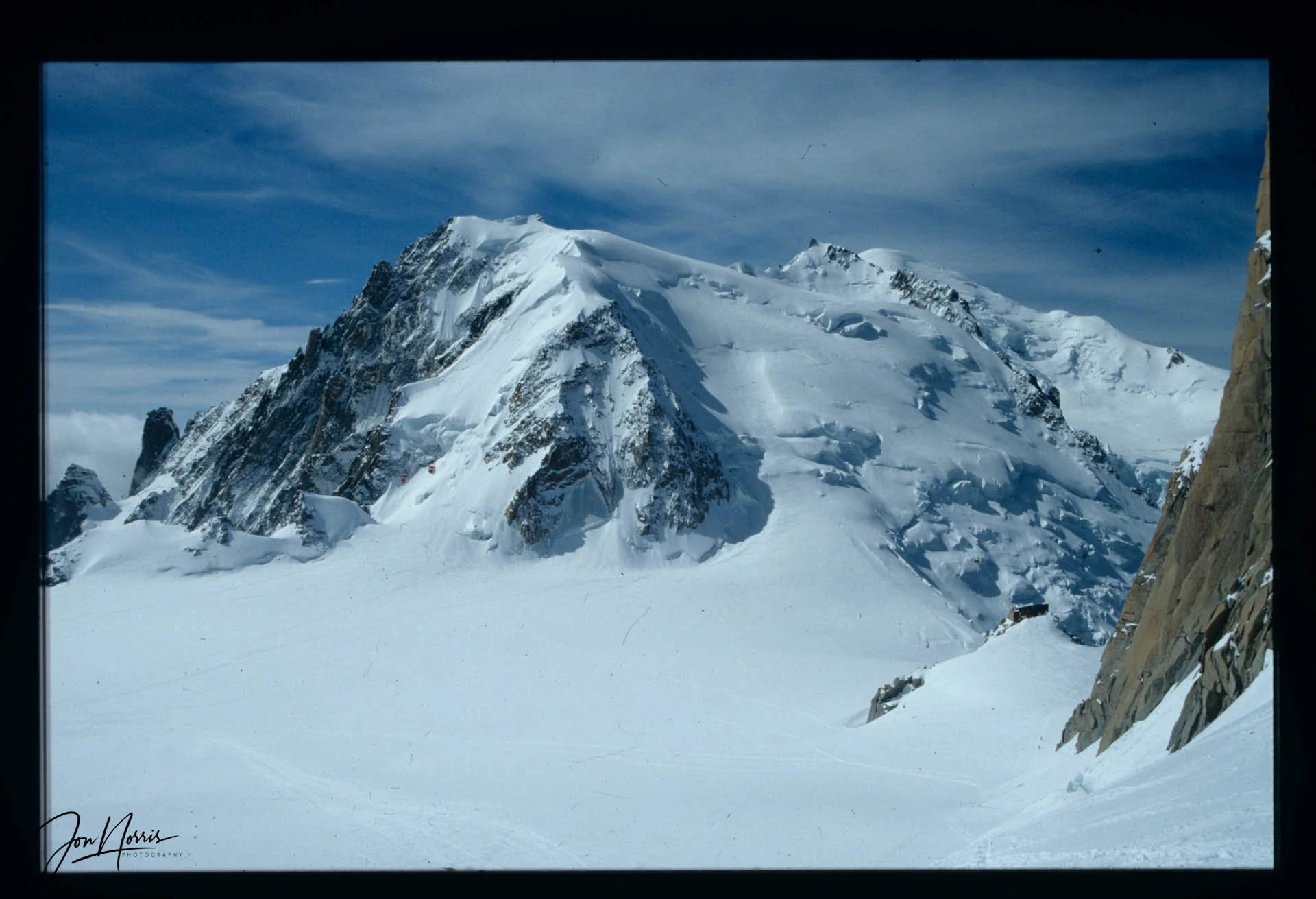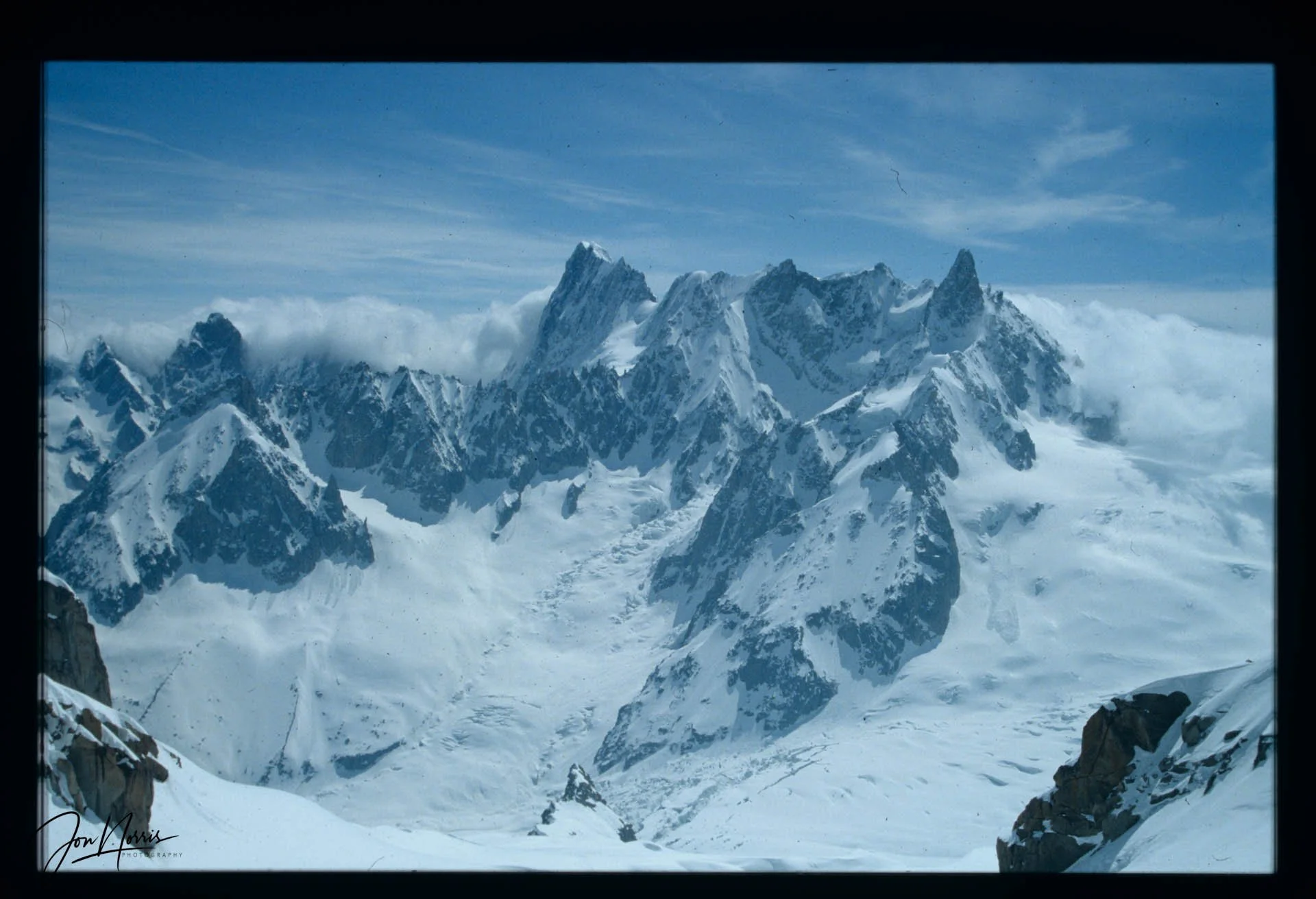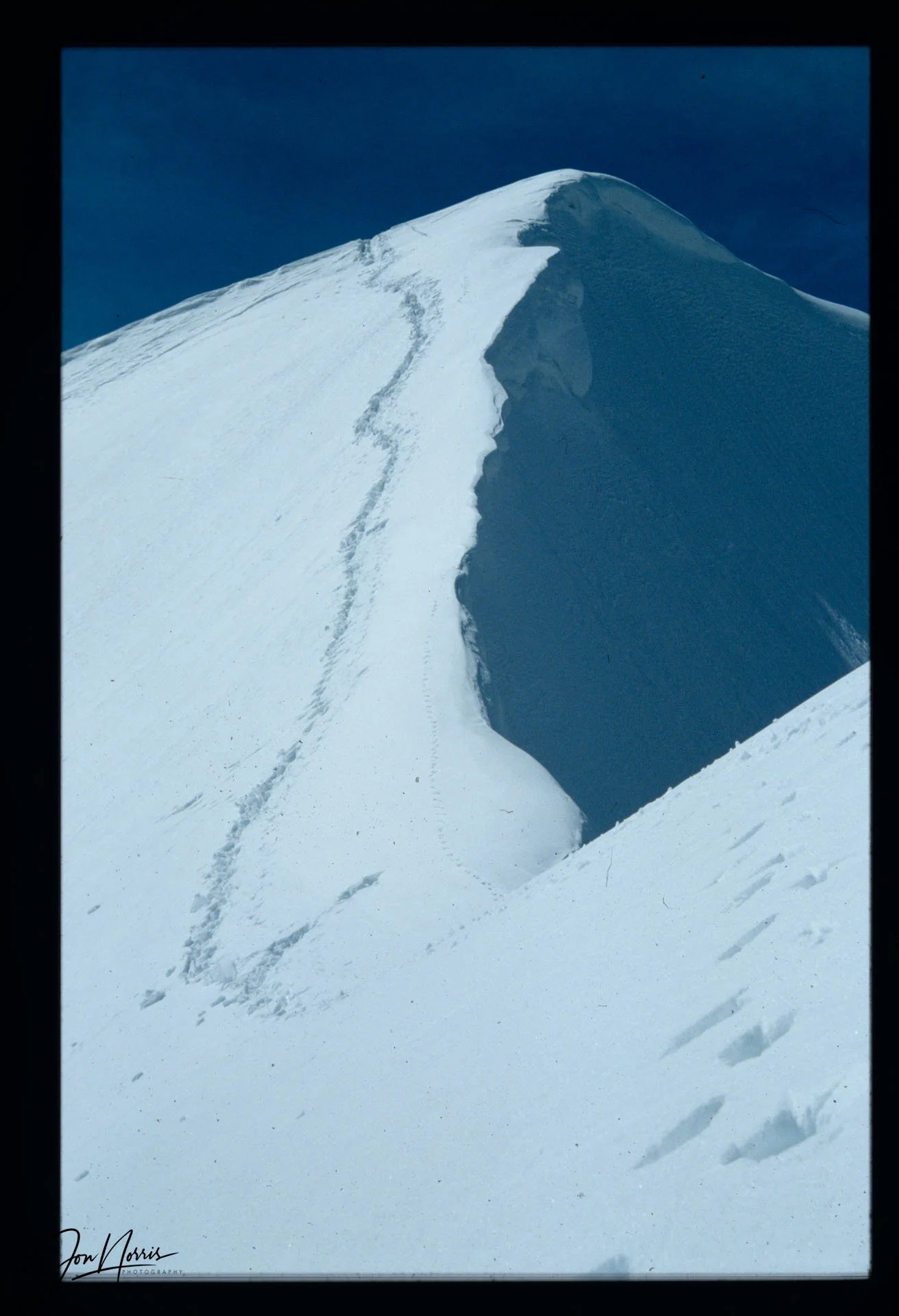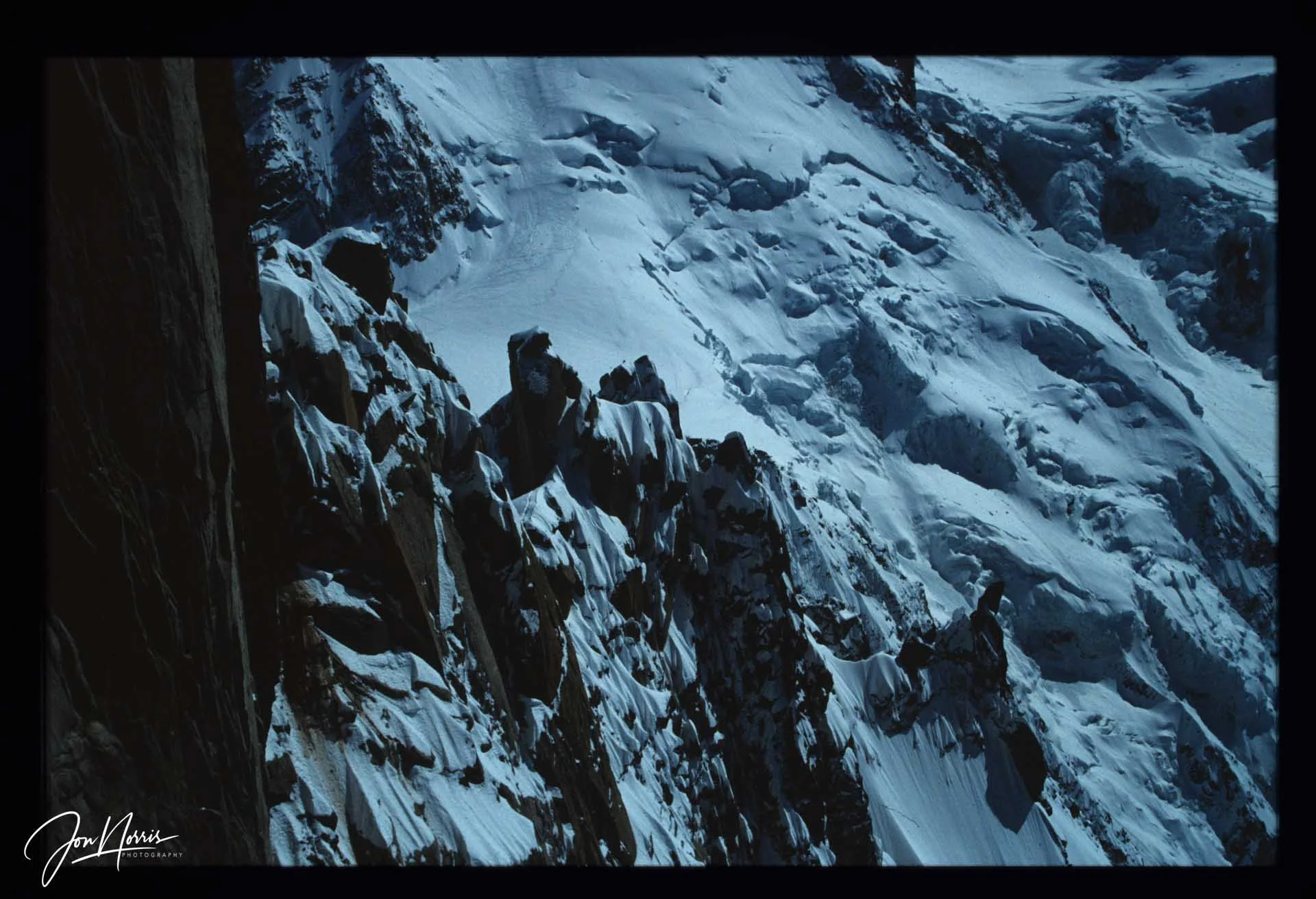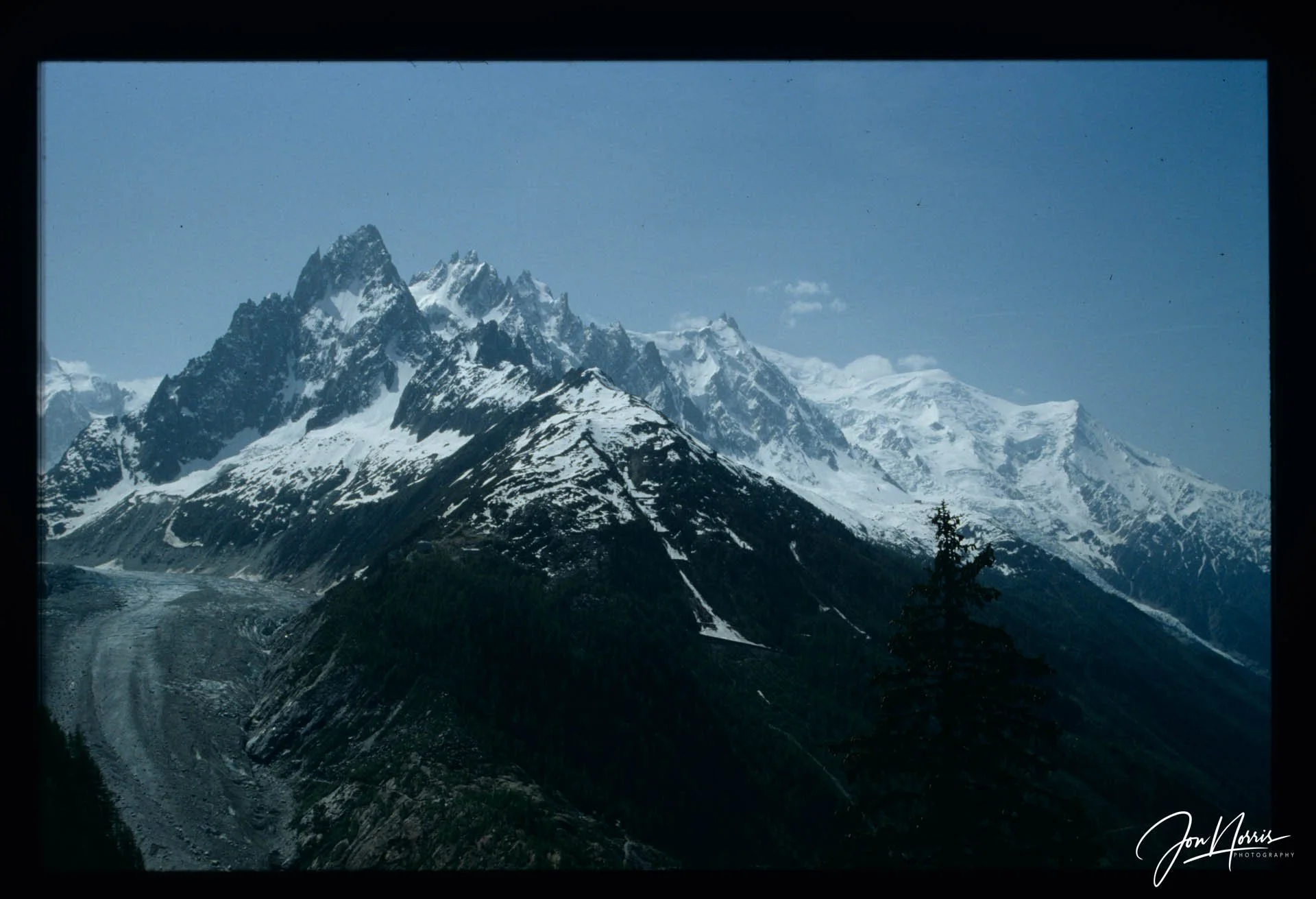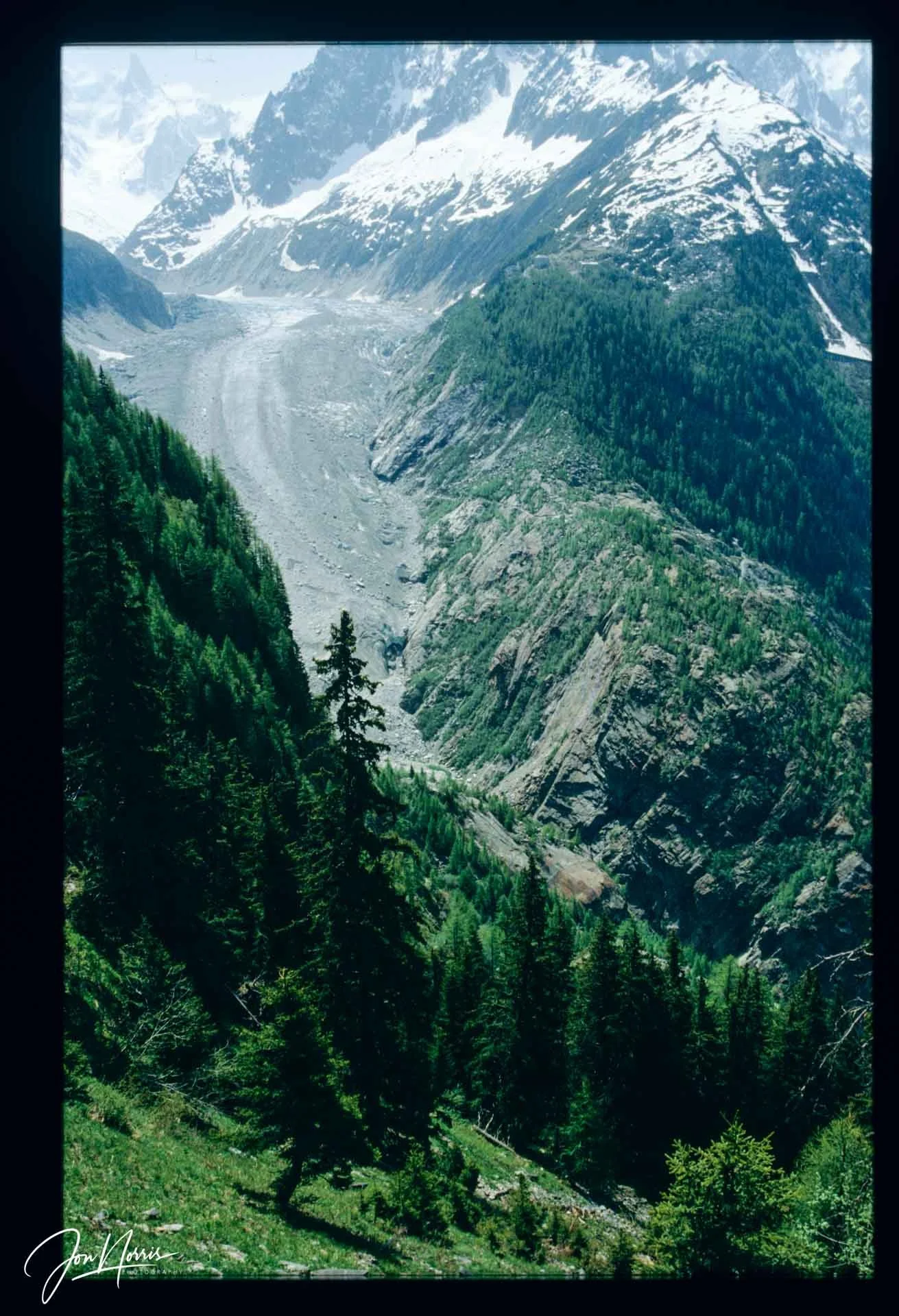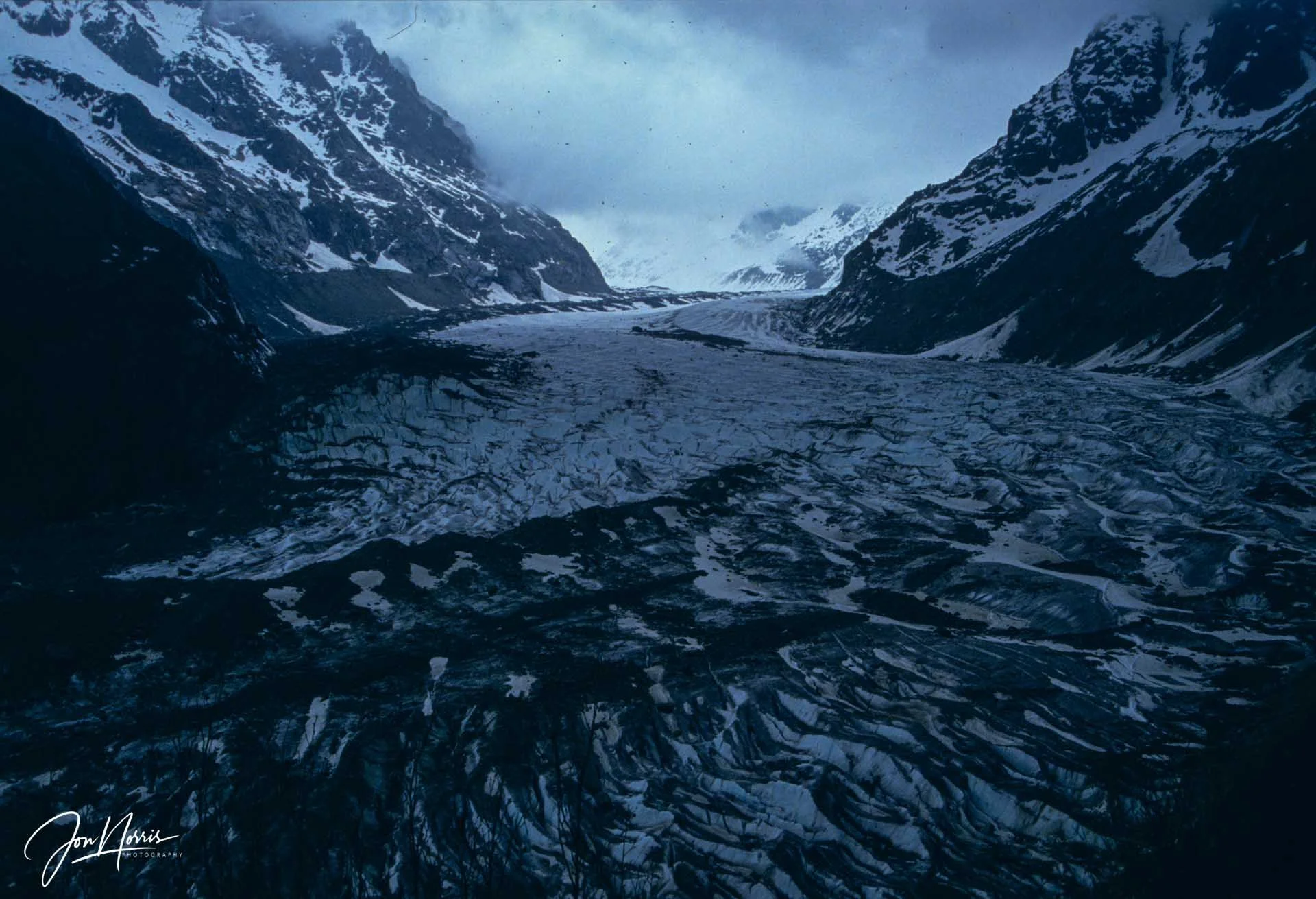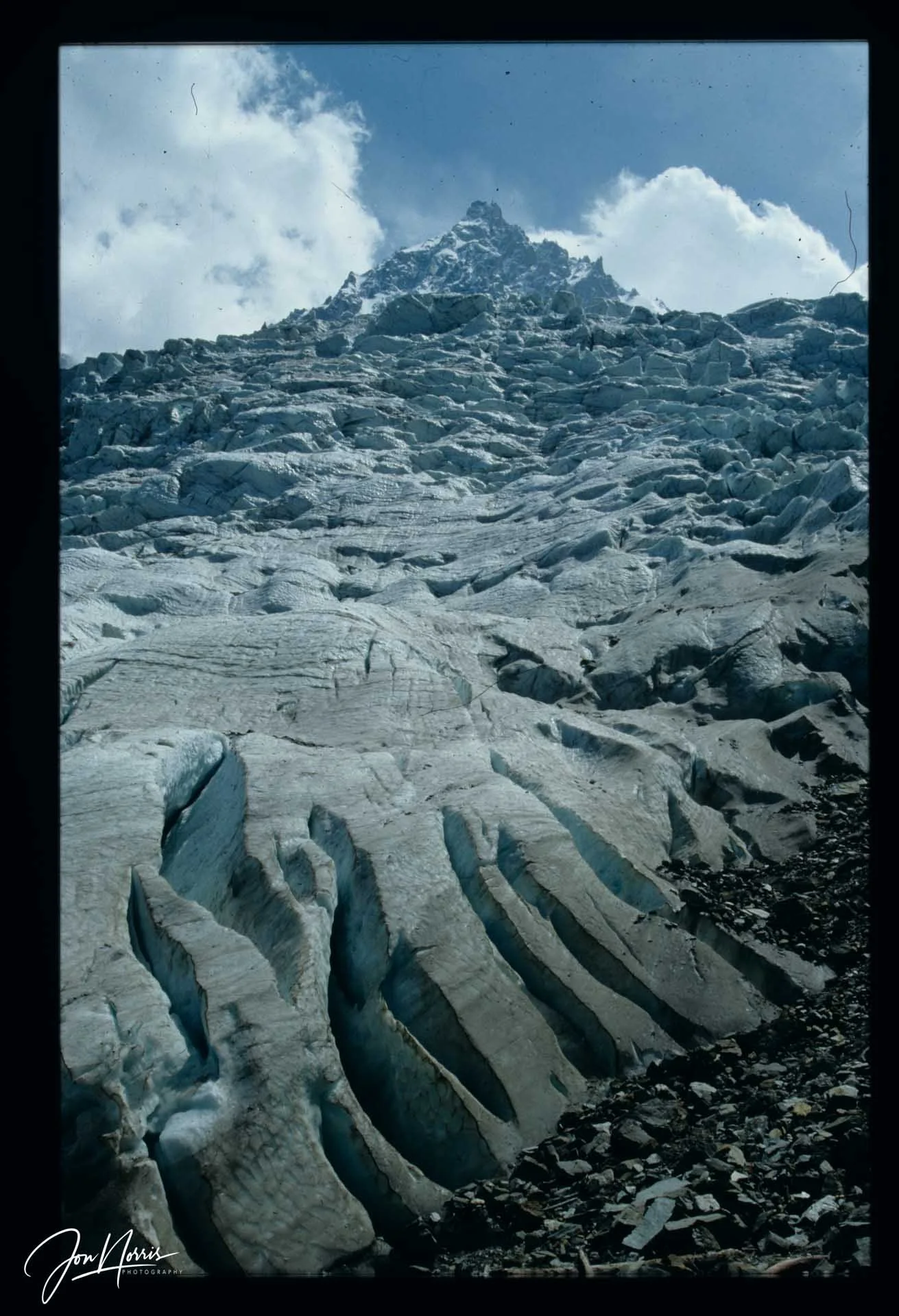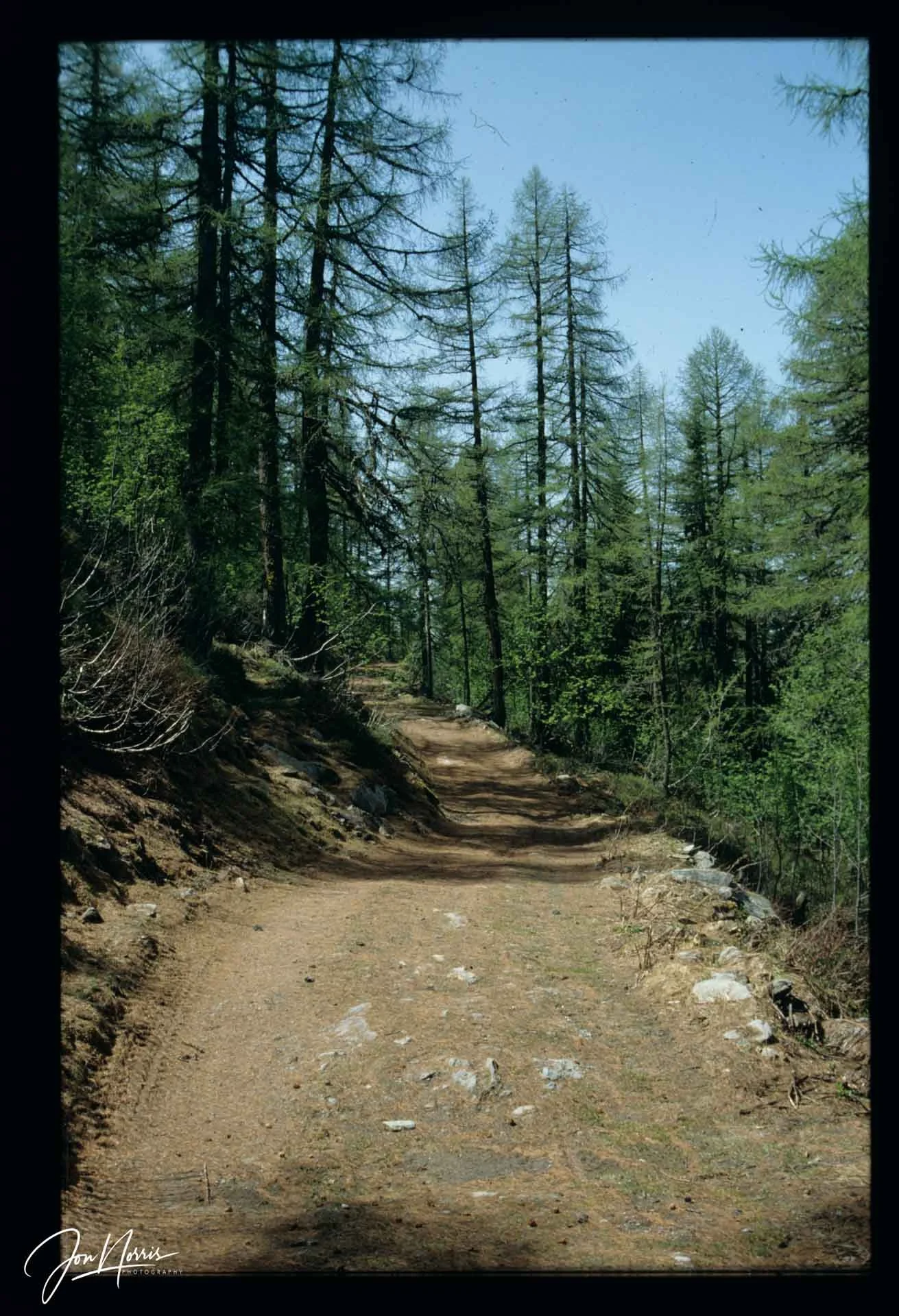From the archive: Kodachrome 64 shots of Chamonix-Mont-Blanc
Explore Landscapes #85
Whether you call it 'dumpster-diving' or 'digging for old-gold', I've been enjoying going through my now 40-years worth of photographs. Thought I'd share a few.
Aiguille du Midi Stations and East Ridge | © 1994 Jon Norris
In the early-90s I made the switch from negative film to positive (or reversal) slide film. I’d ‘cut my teeth’ on countless rolls of poorly exposed black and white (and sometimes color) negative film. There was more often than not that sense of disappointment you get when your pictures come back from the lab and they’re less than magnificent. Or sometimes they were nothing at all because you’d loaded the film incorrectly and it never wound on meaning you never exposed even one image in camera.
But then I discovered Kodachrome. I thought I was ‘it’. Professional photography here I come!
Receiving those little yellow and white cases in the mail from Kodak was always exciting. I have hundreds upon hundreds of Kodachrome slides that chart my progress in photography, most of which, will never see the light of day, because they’re really not that good.
In the words of Paul Simon,
Kodachrome
They give us those nice bright colors
They give us the greens of summers
Makes you think all the world’s
A sunny day, oh yeah
I got a Nikon camera
I love to a photograph
So mama, don’t take my Kodachrome away
I’ll let Paul off for shooting Nikon …
From those many hundreds of Kodachrome slides, I selected my favorites, about 75 in total if I remember rightly, and they then sat in a box, for a good few more years.
Eventually, in 2018 I decided to scan them so that I’d have digital copies. I rented a Nikon Super Coolscan 9000 ED and spent a ridiculous number of hours scanning each slide manually.
From those scanned slides, my absolute favorites were from the trip I made to Chamonix-Mont-Blanc in 1994. This was to be my one and only ‘season’ climbing in the Alps.
Yours truly climbing at St. Margaret’s Bay, Kent, UK (1992)
Before heading to Chamonix, I’d done a few easy winter climbs in North Wales and Scotland. I’d also seconded a route up the White Chalk Cliffs of St. Margaret’s Bay in full alpine gear (see photo above). Many of these routes no longer exist as there have been frequent cliff falls in recent years. The cliffs have become dangerous and unstable. I was woefully unprepared and really had no business going to the Alps to climb.
Chardonnet Peak from Lognon | © 1994 Jon Norris
My alpine baptism was going to be completing ‘The Cosmiques Arete’, a spectacular climb that starts and ends at the Aiguille du Midi. It is one of the most popular alpine routes in the Chamonix Valley with varied climbing on snow, rock and ice.
Here’s how one guiding company describes the route: “Climbing the ‘Arete des Cosmiques’ is a fantastic day in one of the most spectacular parts of the Mont Blanc Massif – you’ll cross glacial terrain, climb up granite slabs and scale icy couloirs surrounded by towering peaks. The Cosmiques Ridge is a superb varied route which is doable by relative beginners to Alpine climbing, yet is interesting enough to satisfy experienced climbers.”
I remember stepping out from the ice tunnel that leads from the Aiguille du Midi cable car station, towards an extremely exposed ridge line with breathtaking views in all directions. I thought to myself, “What the hell am I doing here?”
Anyway, I did finish the route (thanks to a lot of ‘hand-holding’ from my climbing partner who led the whole thing). I finished with significant burns to my face (as I didn’t use enough sun cream). I also learnt what ‘interesting enough’ means in a route description.
Mont Blanc du Tacul, Mont Maudit and Mont Blanc | © 1994 Jon Norris
I’ll leave by short-lived alpine climbing career behind me and instead, focus on the incredible landscape of the Chamonix-Mont-Blanc massif, and the photographs that I took that trip.
Aiguille ou Dent de Geant and Rochefort Arete | © 1994 Jon Norris
The Téléphérique de l'Aiguille du Midi, the cable car that takes you from the town of Chamonix to the summit still holds the record as the highest vertical ascent cable car in the world. It takes you from 1,035 to 3,842m (3,396 to 12,605 ft) in about 20 minutes.
The views from the Aiguille du Midi (‘Needle at midday’) are incredible no matter which way you look.
Our footsteps on the Midi Plan Traverse | © 1994 Jon Norris
At 3,842m (12,605 ft) it was incredibly hard to breathe as I was not at all acclimatized to the altitude. Kicking steps into the ice-crusted snow was exhausting and I was moving very slowly. But I’m stubborn and kept on going.
Cosmique Arete, Aiguille du Midi | © 1994 Jon Norris
As someone seeing the Alps for the first time the scale of the mountains was almost too much to take in. All of the classic mountaineering books that I’d read in my teens started to make sense, crevasses, seracs, couloirs, ice cornices, etc. And they were all the more scary in real life.
Mont Blanc Massif and Mer de Glace | © 1994 Jon Norris
After a long day out on The Cosmiques Arete I was more than happy to spend the rest of the trip at a more moderate altitude and take in the views of the Chamonix Valley from below the tree line.
Mer de Glace | © 1994 Jon Norris
I remember being fascinated by the Mer de Glace (‘Sea of Ice’) glacier when I first saw it from a short section of the Haute Route (which links Chamonix in the French Alps to Zermatt in the Swiss Alps).
Mer de Glace | © 1994 Jon Norris
I wanted to get closer to the Mer de Glace so we took the Montenvers Train up to the viewing station. This train is an old funicular that climbs a steep track to a stunning vantage point above the Mer de Glace.
Looking up Bossons Glacier to Mont Blanc | © 1994 Jon Norris
On the Haute Route above Chamonix | © 1994 Jon Norris
It’s been a long time since I was in Chamonix and I would love to go back. Next time though, I’ll stick to the walking routes. On my bucket list is the Haute Route, and walking from Chamonix to Zermatt.
I hope you enjoyed the Kodachrome images.

